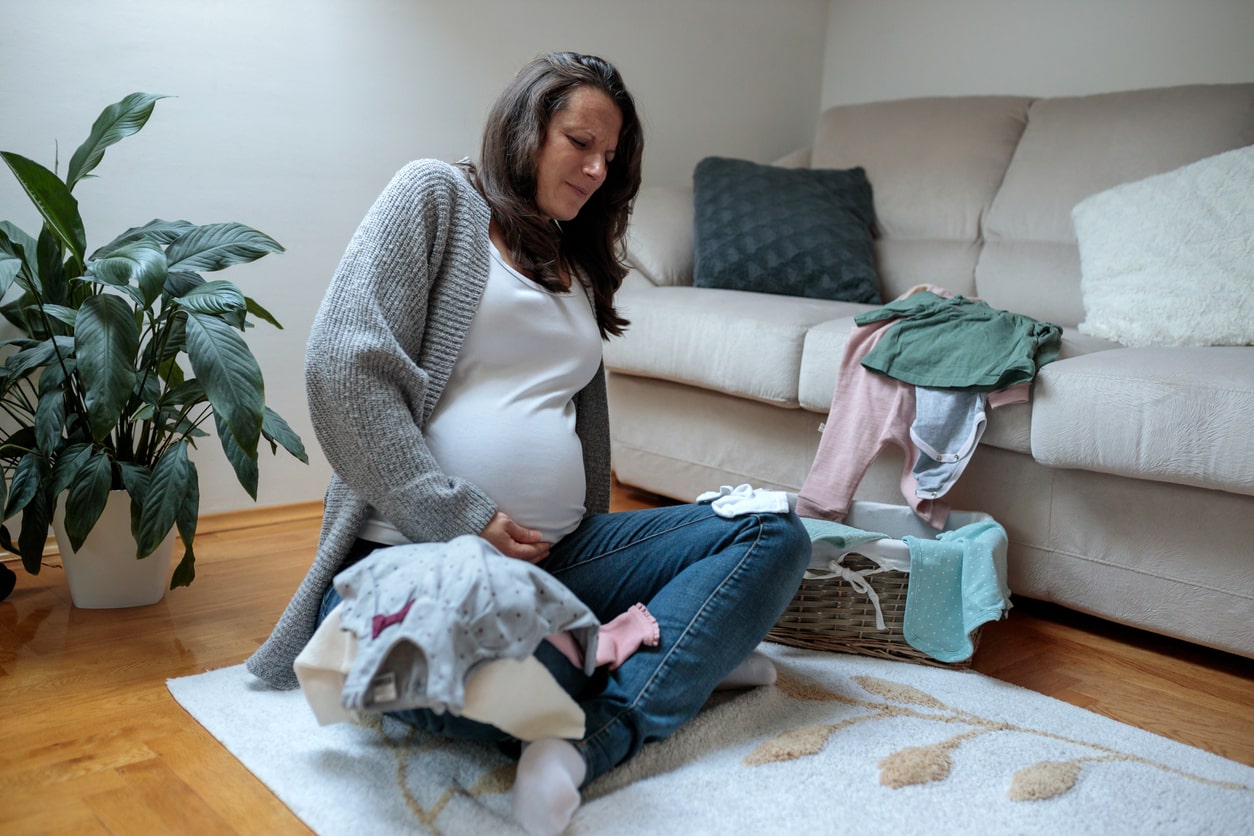When to Go to The Hospital for Labor

As your pregnancy due date is looming, you probably have a lot of questions about when you should head to the hospital to have your baby.
Of course, each person's situation is unique, and your OB-GYN or healthcare provider may have some specific instructions, but there are a few cut-and-dry situations that require a call to your healthcare provider and perhaps a visit to the delivery ward to be evaluated in person.
Related: The First Stage of Labor: Effacement and Dilation
Active Labor and Early Pregnancy Contractions
If your pregnancy is low-risk, you will almost certainly be more comfortable at home at the start of labor. Your chance of having normal labor progress is higher if your early labor is done at home.
Most healthcare providers recommend that you should wait until you're in active labor to head to the hospital. For most people, this will be when contractions are regular, occurring every 5 minutes, and becoming stronger and more painful.
At this stage, the hospital will want to assess how your baby is responding to strong contractions, and you may want some medication for pain. This needs to be administered in a setting where you can be monitored and, in the case of an epidural, can only be given in the hospital.
If your pregnancy is high risk, you have had a prior cesarean birth, you have a breech baby or carry the streptococcus B bacterium (GBS), call the maternity unit to discuss when to go to the hospital.
Preparing to Go to the Hospital for Labor
In late pregnancy, make sure you have a plan in place. Arrange for someone to drive you to the hospital, either your partner or a friend or relative; don't consider driving yourself.
Map the route ahead of time, consider a dry run before the big day, and have a bag packed with everything you will need for you and your baby. Prepare your hospital bag ahead of time with our Perfect Hospital Bag Checklist, According to Dad.
In cases of unplanned labor or precipitous birth, you’ll need to act more quickly to call your medical provider and get a safe ride to the hospital ASAP.
Signs Labor is Approaching

As you near your due date, you may notice many changes in your body before labor starts. Many people notice a sensation of “dropping” when the baby engages in the pelvis ahead of labor.
If this happens to you, you may notice an increase in pelvic pressure, or that it is easier to take a deep breath. Other physical signs that labor may start soon may include an increase in Braxton Hicks contractions, an increase in pelvic pressure, or an increase in bloody mucous or discharge from the vagina.
Some people have also noted emotional signs of labor and changes in mood as they get closer to labor. Increased anxiety, a strong sense of maternal nesting instinct and more frequent hormonal mood swings are all common emotional signs that your body may be ready to give birth.
Early Labor Signs
Early labor can last anywhere from hours to days in some cases. Most hospitals will not admit pregnant people during early labor unless they are considered high-risk, so you will likely be going through early labor at home with your partner or other support person.
During early labor, you will experience contractions, but they may be more than 5 minutes apart. Unlike Braxton Hicks contractions, these contractions will often happen regularly, and may be painful, but will not intensify yet.
Many people feel that early labor contractions start with cramping-style pain. These early, less intense contractions soften and efface (shorten) your cervix and may begin dilation.
During early labor, you might notice a pinkish/brownish vaginal discharge called a mucus plug or bloody show. This is the mucous that blocks the cervical opening. The mucus plug means labor is imminent, but it could still be several days away.
If it is your first baby, early labor tends to take longer than subsequent pregnancies (but not always!). When early labor takes even longer than normal, people may head to the hospital and get diagnosed with prodromal labor (longer than average early labor) or false labor.
If you have hired a doula, early labor is a great time to contact them to see what they recommend. They may have suggestions for relaxation methods and comfort techniques to try at home.
Ways to Relax During Early Labor
- Enjoy a warm bath
- Go for a walk
- Bounce on an exercise ball
- Relax and listen to music
- Breathing techniques to aid in relaxation
- Try meditating or breathing exercises
Active Labor Signs
There are two types of contractions, Braxton Hicks contractions, also called practice contractions, and labor contractions.
Braxton Hicks contractions produce pressure and may be uncomfortable, and some people feel that they are painful. However, active labor contractions will cause your abdomen to tighten, may wrap into your lower back, and you will feel either abdominal or back pain.
If your contractions are happening at a regular, rhythmic rate, that rate increases, and the pain intensifies, then that is one of the most unmistakable signs of labor.
Healthcare providers like to use the 5-1-1 formula to determine labor timing. This means your contractions are roughly 5 minutes apart, lasting 1 minute apiece, and have been going on for 1 hour or more.
If you are having your first baby or are a first-time parent, the 5-1-1 may need to be more like 4-1-1 or even 3-1-1 (contractions may need to be 3-4 minutes apart instead of 5). Your provider will give you instructions about labor timing in the last few weeks of pregnancy.
5-1-1 Contraction Rule
- 5 minutes apart
- 1 minute in duration
- 1 hour or more
If you are experiencing the 5-1-1 contraction rule, give your healthcare provider a call and head to the hospital!
Other Physical Signs of Active Labor
- A trickle or gush of fluid from your vagina (your water breaking)
- Brown or reddish discharge
- Pressure in your lower abdomen
Call your healthcare provider if you notice any of these symptoms:
- Bright red bleeding from the vagina
- Leaking fluid
- A change in your baby’s movement (if you’ve felt less than ten movements in 2 hours)
- Regular contractions before your 37th week
Labor Monitoring in the Last Weeks of Pregnancy

In the final four (or five) weeks of your pregnancy, you will likely visit your healthcare provider every week until your delivery. Some women plan and opt for a cesarean, while others may plan an inducement if the baby is late.
Most doctors will not schedule either before 40 weeks unless you are in a high-risk pregnancy. Here’s what to expect during these final four or five visits.
During your last few weeks of pregnancy, you will be seen every week to check on the health of you and your baby. Usually, the 36-week visit is a bit longer and will cover some extra information such as:
- The signs and stages of labor
- Limiting travel to no more than an hour from home
- Complications that are more common in the last few weeks of pregnancy
- Information about breastfeeding, an epidural, or other options for pain relief, and preparing for your hospital stay
- You will likely be given information about how to pre-register at the hospital or birthing center
- Your teaching may include information on what to pack in your hospital bag
During these last few visits, your healthcare provider will:
- Continue to monitor your vital signs
- Continue to check the baby’s heartbeat and measure your fundal height
- Feel your belly or consider an ultrasound to check on the baby’s position
In the last week or two of pregnancy, your healthcare provider also might:
- Ask if you would like to have a cervical exam for signs of dilation
- Ask if you’d like a membrane sweep which can sometimes stimulate labor
- Discuss plans for induction if your baby is late.
When to Seek Emergency Care During Pregnancy
Most healthy pregnancies end with a healthy and successful vaginal or cesarean birth. However, you should be aware of situations that prompt an urgent visit to the hospital while pregnant.
Preeclampsia
Preeclampsia is a dangerous condition during which the pregnant person’s blood pressure spikes and requires immediate medical care. Signs of preeclampsia are:
- Severe headaches that do not get better with medications such as Tylenol
- New or unusual nausea or vomiting
- Upper right-sided abdominal pain or shoulder pain
- Sudden weight gain of 3-5 pounds in a week
- Changes in vision
- High blood pressure
- New or unusual shortness of breath
Decrease in Fetal Movement
Once you hit the middle of your pregnancy, you’ll begin to notice your baby moving. By the third trimester, the baby will have developed a somewhat predictable movement pattern.
Call your healthcare provider or head to the hospital if you notice your baby moves less than normal, or you’ve felt less than ten movements in the last two hours.
Vaginal Bleeding or a Gush of Fluid
Some people will have a bit of spotting in early pregnancy, and it is common to notice some vaginal discharge as pregnancy progresses. However, it is never normal to experience bright red bleeding like a period. If this occurs, it could indicate a problem with the placenta, and you should contact your healthcare provider or obstetrics office right away.
If you notice it feels like you’ve peed your pants, or you feel a large gush of water, your amniotic sac may have broken. If you think you might be leaking amniotic fluid, even if you are not having contractions, it’s time to get checked out.
Leaking amniotic fluid for a long time could increase your risk of infection, so if your water has broken but labor has not started, your healthcare provider may recommend induction of labor.
Once you're in active labor, a final reason to go to the hospital is to make sure your baby is born there. An unplanned home (or car) birth is not best for you or your baby.
This is unusual in a first pregnancy, but with subsequent births, women are more likely to arrive at the hospital dilated or to have an unintended home birth.
Hospital Admission Procedure for Labor
When you get to the hospital, you'll be checked in and will be put into a labor room if you look like you're in active labor, or into an assessment bed if this isn't clear. Usually, you will be asked for a urine specimen, and a nurse will check your temperature, pulse, and blood pressure, check your cervix, and review your pregnancy history.
If you're in early labor, you may be sent home to wait for labor to become more active. This doesn't mean you were unwise to come in; it's good to ensure all is well.
Once you've been admitted, you and your baby will be assessed by a doctor, midwife or nurse. Sometimes an intravenous (IV) line will be placed and blood tests may be done. You can make your room comfortable with items from home.
At any point during your pregnancy you feel unsure about a symptom or have questions, even postpartum, give your healthcare provider a call!
There are no questions or concerns that are too silly or too small when it comes to your and your baby’s health.
If you are looking for more ideas on what to expect and how to prepare for your trip to the hospital, check out Preparing Yourself for Childbirth: Packing Your Hospital Bag.


